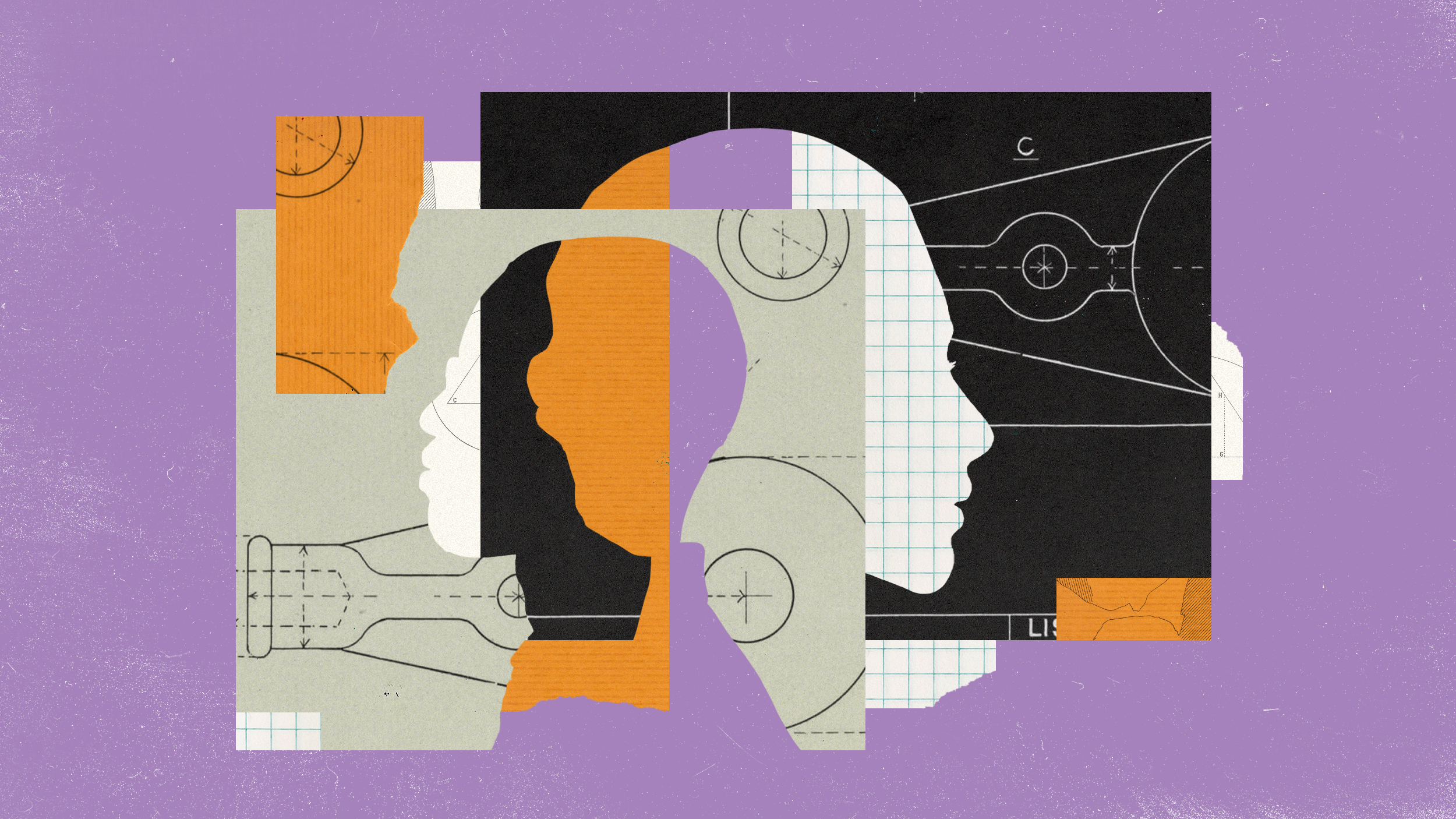Why a more diverse workplace is also a more talented one
Ram Charan has spent his working life as a business mentor and consultant to CEOs of global companies. He’s the guy that Coca-Cola, KLM, GE, and Bank of America (just to name a few) call when they need help. And he’s a firm believer in a diverse workplace. If a 90-year-old can do the job the best, then why not hire them? Raw talent doesn’t just exist in ivy league business schools, he says, and that applies to the whole company… from the work floor to the boardroom. Ram’s latest book is Talent Wins: The New Playbook for Putting People First , and he is brought to you today by Amway. Amway believes that diversity and inclusion are essential to the growth and prosperity of today’s companies. When woven into every aspect of the talent life cycle, companies committed to diversity and inclusion are the best equipped to innovate, improve brand image and drive performance.
Would companies be more diverse if A.I. did the hiring?
The best hiring manager might just be the computer sitting on your desk. AI and ethics expert Joanna Bryson posits that artificial intelligence can go through all the resumes in a stack and find what employers are missing. Most humans, on the other hand, will rely on biases — whether they are aware of them or not — to get them through the selection process. This is sadly why those with European-sounding names get more calls for interviews than others. AI, she says, can change that. Joanna is brought to you today by Amway. Amway believes that diversity and inclusion are essential to the growth and prosperity of today’s companies. When woven into every aspect of the talent life cycle, companies committed to diversity and inclusion are the best equipped to innovate, improve brand image and drive performance.
How equal parental leave can help close the gender pay gap
It’s no small secret that America is far behind the rest of the world when it comes to maternal leave. But studies are finding that paternal leave shouldn’t be overlooked, either. Lauren Smith Brody, former editor of Glamor magazine and now a full-time author and founder of The Fifth Trimester movement, makes the case here that dads need time off, too, to bond with their newborns, and that modern companies need to understand and appreciate that. Lauren’s latest book is The Fifth Trimester: The Working Mom’s Guide to Style, Sanity, and Success After Baby. This video is brought to you by Amway. Amway believes that diversity and inclusion are essential to the growth and prosperity of today’s companies. When woven into every aspect of the talent life cycle, companies committed to diversity and inclusion are the best equipped to innovate, improve brand image and drive performance.
Real talk at work: How Amway created a better office for more people
Most people approach talking about difficult subjects as if they were at a debate. That is, arriving at the table (metaphorically speaking) with preconceived notions and ideas. But Amway’s VP of Global Litigation and Corporate Law, Claire Groen, knew there had to be a better way. She and the leaders at Amway devised what they call RealTalk, which brings people together to hold conversations on current topics. And when the topics happened to turn into hot-button issues like immigration, the racism at Charlottesville, and so forth, these talks became an incredible conduit to a more inclusive office. People were heard, and in turn listened more to ideas outside of their comfort zone. This resulted in a better and more inclusive culture at Amway. Amway believes that diversity and inclusion are essential to the growth and prosperity of today’s companies. When woven into every aspect of the talent life cycle, companies committed to diversity and inclusion are the best equipped to innovate, improve brand image and drive performance.
Breaking the ice: How astronauts overcome their differences aboard the ISS
Look up—you can see the greatest feat of human cooperation orbiting 254 miles above Earth. As commander of Expedition 35 aboard the International Space Station (ISS), Canadian astronaut Chris Hadfield understands the difficulty of cultural barriers in team work, and the life or death necessity of learning to communicate across those divides. The ISS is a joint project between five space agencies, built by people from 15 different nations—and each of them has a different take on what is “normal”. Hadfield explains the scale of cultural differences aboard the spaceship: “What do you do on a Friday night? What does “yes” mean? What does “uh-huh” mean? What is the day of worship? When do you celebrate a holiday? How do you treat your spouse or your children? How do you treat each other? What is the hierarchy of command? All of those things seem completely clear to you, but you were raised in a specific culture that is actually shared by no one else.” Here, Hadfield explains his strategy for genuine listening and communication. Whether it’s money, reputation, or your life that’s at stake, being sensitive and aware of people’s differences helps you accomplish something together—no matter where you’re from. Amway believes that diversity and inclusion are essential to the growth and prosperity of today’s companies. When woven into every aspect of the talent life cycle, companies committed to diversity and inclusion are the best equipped to innovate, improve brand image and drive performance. Chris Hadfield features in the new docuseries One Strange Rock and is the author of An Astronaut’s Guide to Life on Earth: What Going to Space Taught Me About Ingenuity, Determination, and Being Prepared for Anything
.
How experiencing discrimination in VR can make you less biased
What would it be like to live in the body of someone else? Since the dawn of mankind, people have imagined what it would be like to inhabit another body, just for a day or even for a few minutes. Thanks to the magic of VR, we can now do that. Jeremy Bailenson, the creator of the Virtual Human Interaction Lab, has designed a VR experience called 1000 Cut Journey that may change the way people see race: by experiencing it firsthand. Jeremy explains to us, “You start out as an elementary school child and you’re in a classroom. You then become a teenager and you’re interacting with police officers. You then become an adult who’s going on a job interview, and what you experience while wearing the body of a black male is implicit bias that happens repeatedly and over time.” Jeremy is brought to you today by Amway. Amway believes that diversity and inclusion are essential to the growth and prosperity of today’s companies. When woven into every aspect of the talent life cycle, companies committed to diversity and inclusion are the best equipped to innovate, and improve brand image and drive performance.
When data drives diversity and inclusion, good things happen
What makes a job a great place to work? A sense of equity and ownership, says Michael Bush, the CEO of the conveniently named Great Place to Work. They’re a global consulting and analytics firm that produces the annual Fortune 100 Best Companies to Work For list, the 100 Best Workplaces for Women list, the Best Workplaces for Diversity list, and dozens of other distinguished workplace rankings around the world. Michael’s new book is A Great Place to Work for All: Better for Business, Better for People, Better for the World, and he’s brought to you today by Amway. Amway believes that diversity and inclusion are essential to the growth and prosperity of today’s companies. When woven into every aspect of the talent life cycle, companies committed to diversity and inclusion are the best equipped to innovate, improve brand image and drive performance.
Neurodiversity: Many mental ‘deficits’ are really hidden strengths
Color-blindness. Left-handedness. Dyslexia. Autism. These are all different ways in which the brain is rewired differently than the norm. But Heather Heying, evolutionary biologist and former Professor at Evergreen State College, is saying that these so-called differences are really strengths. For example, she relays us a story about her autistic students being far more adept at spotting social dynamics emerging in the classroom, long before non-autistic students. And left-handed people are often way more creative than their righty counterparts. Evolution might suggest that we need these differences to be stronger as a whole. Be sure to follow Heather on twitter: @HeatherEHeying and through her website, heatherheying.com. Heather is brought to you today by Amway. Amway believes that diversity and inclusion are essential to the growth and prosperity of today’s companies. When woven into every aspect of the talent life cycle, companies committed to diversity and inclusion are the best equipped to innovate, improve brand image, and drive performance.







